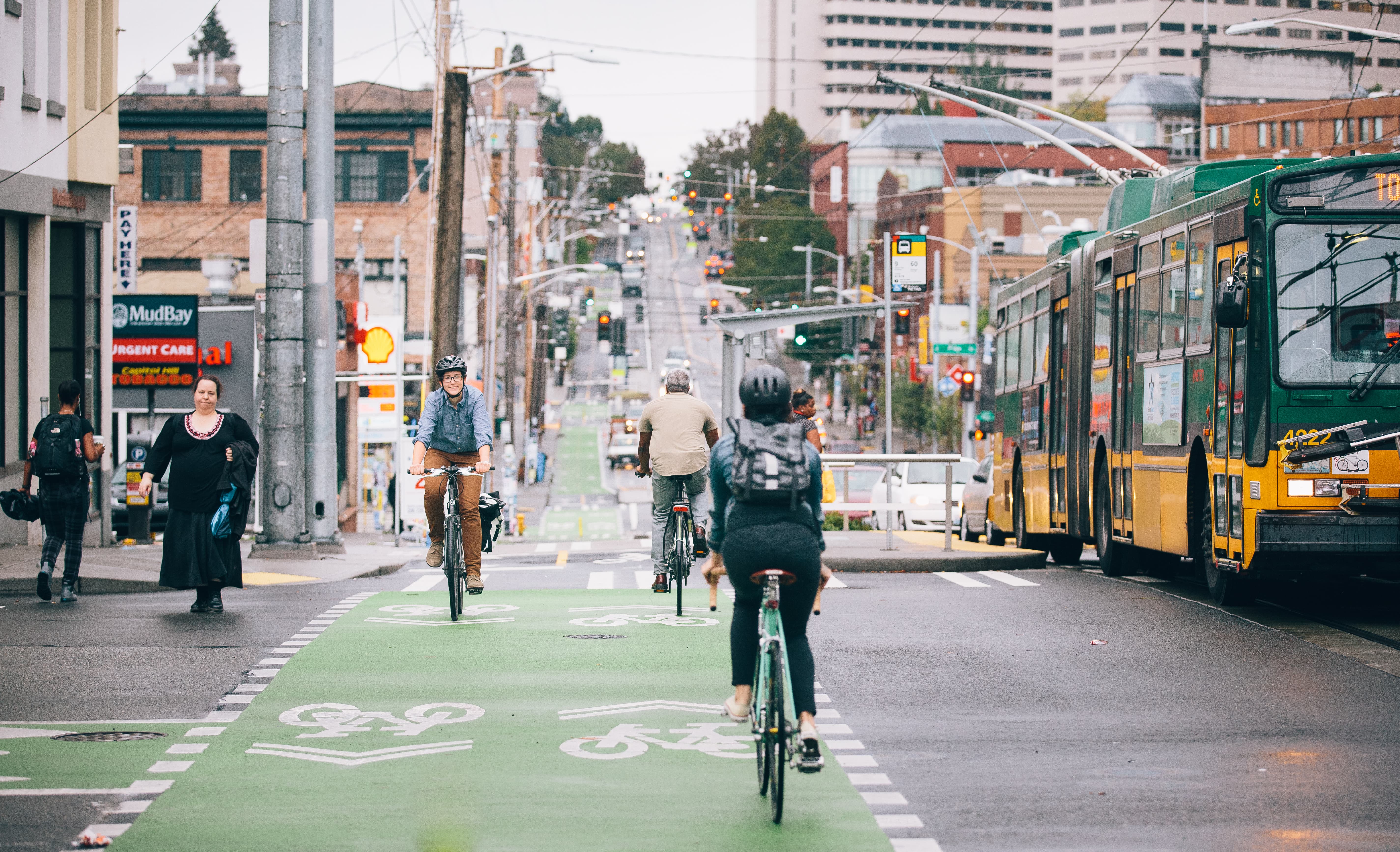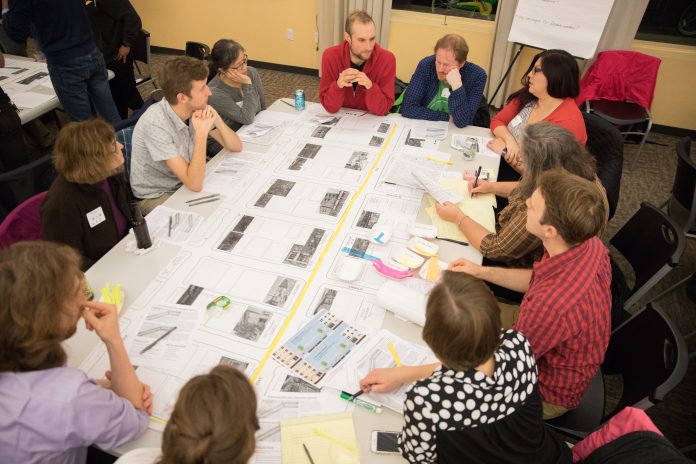Using a new online survey, community input will be collected until the end of the year.
In October Central Seattle Greenways, Seattle Neighborhood Greenways, and the Capitol Hill EcoDistrict held a community design workshop that brought 150 people together to discuss their potential design ideas for the protected bike lanes coming to Pike and Pine Street on Capitol Hill in 2019.
The protected bike lanes will operate in separate directions on Pike and Pine between I-5 and 1st Avenue downtown; however, on Capitol Hill the City has determined the bike lane will need to run on Pike Street only until it connects with the existing protected bike lane on Broadway. As a result, big decisions will need to made about several important design features such as:
- On which street cyclists will transition from Pine Street to the protected bike lanes on Pike Street. Current options being explored include Minor, Melrose, and Bellevue Avenue.
- Whether to have separate one-way lanes on opposite sides of the street or a single bike lane with two way traffic on one side of the street.
- How much space to dedicate to on-street parking, loading zones, and community features such as parklets.
Concerned that not all community needs were represented at the workshop, the organizers have decided to extend the conversation using an online survey that will be open until the end of the year.
“We particularly want to hear from blind, deaf, and mobility challenged communities, communities of color, nightlife businesses, Seattle Central College students, delivery drivers, and ride-for-hire drivers,” said Brie Gyncild of Central Greenways, one of the event organizers.
In an effort to make sure that all impacted communities are consulted about the future designs, the organizers will also engage in targeted outreach and attend community meetings.
“Our goal through all of this effort is to ensure that everyone who has an interest in the street design has a voice in it,” Gyncild said. “We want to make sure that our advocacy improves the street without creating unexpected harms.”
The input collected from the survey will be used to prepare a high-level summary for Seattle City Council, as well as a more intensive analysis that will be shared with the Seattle Department of Transportation (SDOT) and used to direct community advocacy efforts. The data will be shared by the end of January, or earlier, to ensure that it can meaningfully impact SDOT’s design.

Business owners from the Pike/Pine corridor were present at the earlier community design meeting and some expressed frustration at the loss of parking that would occur with the addition of the protected bike lanes to the streets.
Concern voiced by the Capitol Hill Chamber of Commerce about how protected bike lanes would impact businesses’ access for deliveries was one of the reasons why a proposed extension of the Broadway protected bike lane to Roy Street has been put indefinitely on hold.
To avoid future conflict, the Pike/Pine protected bike lane organizers have been working to ensure businesses are included in the conversation. Potential mitigation strategies for businesses will continue to be explored as the project moves forward.
“Ultimately, we’re advocates, not city officials. All final decisions will be made by the City,” Gyncild said. “But we know that when a community comes together with a strong vision and articulated priorities and concerns, city planners are much better able to design a street that works well.”
Natalie Bicknell Argerious (she/her) is a reporter and podcast host at The Urbanist. She previously served as managing editor. A passionate urban explorer since childhood, she loves learning how to make cities more inclusive, vibrant, and environmentally resilient. You can often find her wandering around Seattle's Central District and Capitol Hill with her dogs and cat. Email her at natalie [at] theurbanist [dot] org.



